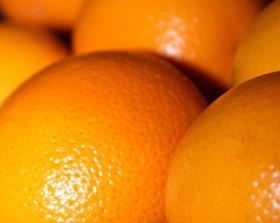
There are a few clouds on the horizon for California navel growers as the season approaches.
One of the state’s most promising markets, China, abruptly closed it borders to California citrus last April, citing incidences of phytophthora syringae (‘brown rot’) in several shipments of oranges last season.
China was a 2.5m carton market for US grown citrus last year, so losing access in the face of another large navel crop has been a disappointment for the California industry.
Growers are understandably nervous that they may face the same fate as Washington’s apple growers in 2009/10 season, when China halted all exports citing incidences of post-harvest decay in shipments arriving on the mainland.
Although US government and private industry officials contended that China was using ‘bad science’ in their assertions decayed fruit posed a threat to their domestic apple industry, no resolution had been reached as the new season commenced and none was expected any time soon.
Another issue confronting the California citrus industry this year involves its largest offshore market – South Korea – a pest know as the fuller rose beetle (FRB). Endemic to the southern and western US and on a list of pests prohibited in South Korea, FRB is harmless to humans but likes to lay its eggs in the stem area of citrus.
Korea has recently announced that from 1 January 2014, it will cease methyl bromide treatments out of concern for its dockworkers’ health, putting the onus squarely on the California citrus industry to reduce – if not eliminated altogether – incidence of FRB eggs present in its citrus shipments, or risk them being rejected entirely.
The fact South Korea represents annual sales of around 10m navel cartons, valued at over US$200m, has the California industry scrambling for solutions.
Perhaps the most dire threat to the California citrus industry is the prospect of the introduction of Huanglongbing (HLB) disease. Also known as citrus greening, HLB is a bacterium that, upon infection, is universally fatal to citrus trees, causing fruit to harden and become inedible in the process.
The disease is carried by a vector – the Asian citrus psyllid (ACP) – and was first detected in the US in Florida in 1998. The insect quickly spread throughout the state and has steadily migrated westward across the country and Mexico until it arrived in Southern California in 2008.
Despite diligent quarantine measures to eradicate ACPs, the pest has continued to expand its range across Southern California and is on the verge of becoming established in the heart of the state’s citrus-growing region – the San Joaquin Valley.
As of September, ACP populations had been detected in both Kern and Tulare counties, bringing to 11 the number of California counties under quarantine.
Fortunately, only one incidence of an HLB-carrying psyllid has been detected to date, which was in Los Angeles County last year.











